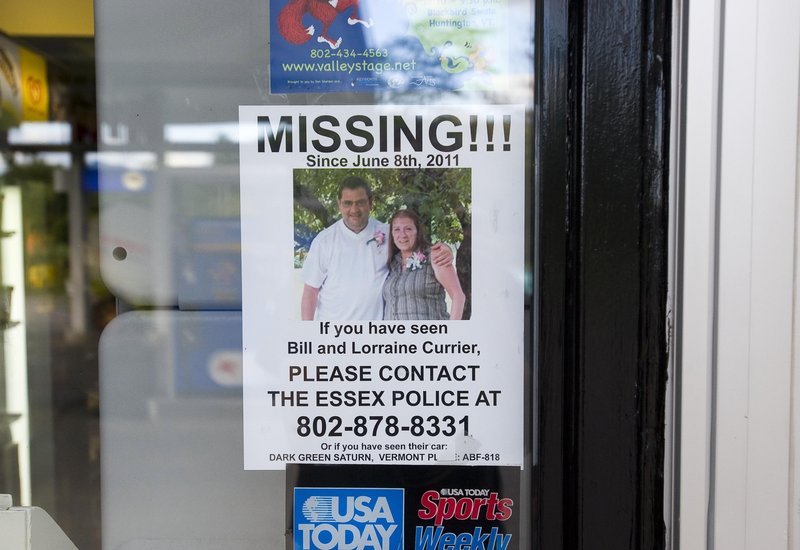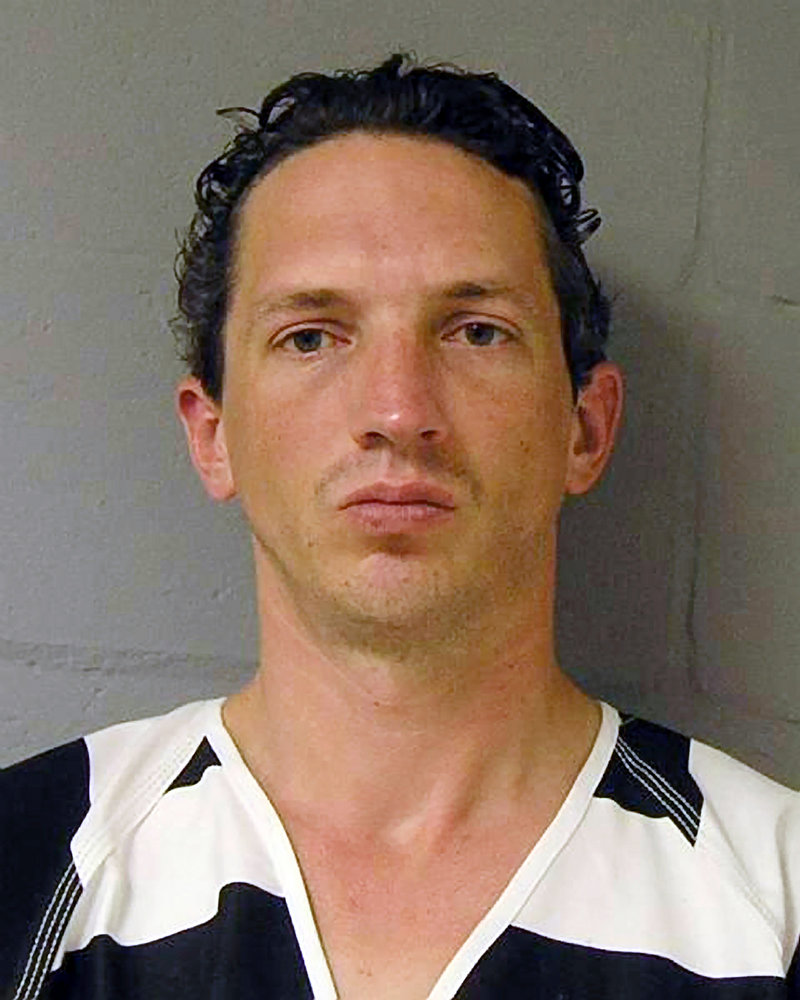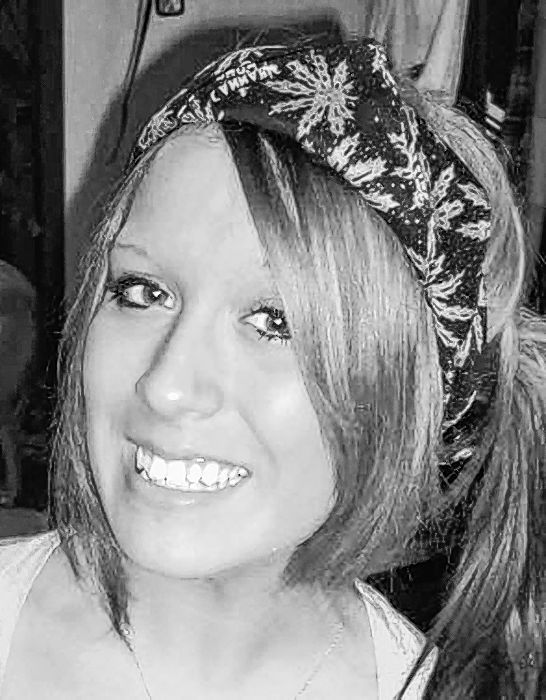ANCHORAGE, Alaska – The suspect, hands and feet shackled, fidgeted in his chair, chuckling at times as he confessed to a brutal killing.
Israel Keyes showed no remorse as he described in merciless detail how he’d abducted and strangled an 18-year-old woman, then demanded ransom, pretending she was alive. As the two prosecutors questioned him, they were struck by his demeanor: He seemed pumped up, as if he were reliving the crime. His body shook, they said, and he rubbed his muscular arms on the chair rests so vigorously his handcuffs scraped off the wood finish.
The prosecutors had acceded to Keyes’ requests: a cup of Americano coffee, a peanut butter Snickers and a cigar (for later). Then they showed him surveillance photos, looked him in the eye and declared: We know you kidnapped Samantha Koenig. We’re going to convict you.
They aimed to solve a disappearance, and they did. But they soon realized there was much more here: a kind of evil they’d never anticipated.
Confessing to Koenig’s killing, Keyes used a Google map to point to a spot on a lake where he’d disposed of her dismembered body and gone ice fishing at the same time.
He wasn’t done talking, though. He declared he’d been “two different people” for 14 years. He had stories to tell, stories he said he’d never shared. He made seemingly plural references and chilling remarks such as, “It takes a long time to strangle someone.”
As prosecutors Kevin Feldis and Frank Russo and investigators from the FBI and Anchorage police listened that day in early 2012, they came to a consensus:
Israel Keyes wasn’t talking just about Samantha Koenig. He’d killed before.
AUTHORITIES LOOKING FOR ANSWERS
In 40 hours of interviews over eight months, Keyes talked of many killings; authorities believe there were nearly a dozen. He traveled from Vermont to Alaska hunting for victims. He said he buried “murder kits” around the country so they would be readily accessible. These caches — containing guns, zip ties and other supplies used to dispose of bodies — were found in Alaska and New York.
At the same time, incredibly, Keyes was an under-the-radar everyday citizen — a father, a live-in boyfriend, a respected handyman who had no trouble finding jobs in the community.
Keyes claimed he killed four people in Washington state, dumped another body in New York and raped a teen in Oregon. He said he robbed banks to help finance his crimes; authorities corroborated two robberies in New York and Texas. He confessed to burning down a house in Texas, contentedly watching the flames from a distance.
Though sometimes specific, he was often frustratingly vague. Only once — other than Koenig — did he identify by name his victims: a married couple in Vermont.
Israel Keyes wanted to be in control. Of his crimes. Of how much he revealed. And, ultimately, of his fate.
In December, he slashed his left wrist and strangled himself with a sheet in his jail cell. He left two pages of bloodstained writings. And many questions.
Investigators are now left searching for answers, but they face a daunting task: They’re convinced that the 34-year-old Keyes was a serial killer; they’ve verified many details he provided. But they have a puzzle that spans the U.S. and dips into Mexico and Canada — and the one person who held the missing pieces is dead. FBI agents on opposite ends of the country, joined by others, are working the case, hoping a timeline will offer clues to his grisly odyssey.
But they know, too, that Keyes’ secrets are buried with him — and may never be unearthed.
Authorities aren’t certain when Keyes’ crime spree began or ended. But they have a haunting image of his last known victim.
Snippets of a surveillance video show the first terrifying moments of Koenig’s abduction. Keyes is seen as a shadowy figure in ski mask and hood outside Common Grounds, a tiny Anchorage coffee shack then partially concealed from a busy six-lane highway by mountains of snow.
It’s Feb. 1, 2012, about 8 p.m., closing time. Koenig is shown handing Keyes a cup of coffee, then backing away with her hands up, as if it’s a robbery. The lights go out and Keyes next appears as a fuzzy image climbing through the drive-through window. On Feb. 2, Keyes raped and strangled Koenig. He left her in that shed, flew to Houston and embarked on a cruise, returning about two weeks later.
He then took a photo of Koenig’s body holding a Feb. 13 newspaper to make it appear she was alive. Keyes wrote a ransom note on the back, demanding $30,000 be placed in her account. He texted a message, directing the family to a dog park where the note could be found. Her family deposited some money from a reward fund.
A KILLER’S DOUBLE LIFE
On Feb. 29, Keyes withdrew $500 in ransom money from an Anchorage ATM, using a debit card stolen from Koenig’s boyfriend (the two shared an account). Then on March 7, far away in Willcox, Ariz., Keyes withdrew $400.
By then, authorities had a blurry ATM photo and a pattern: Keyes was driving along Interstate 10 in a rented white Ford Focus. On March 13, nearly 3,200 miles from Anchorage, police in Lufkin, Texas, pounced when they spotted Keyes driving 3 mph above the speed limit.
Inside his car was an incriminating stash: Rolls of cash in rubber bands. A piece of a gray T-shirt cut out to make a face mask. A highlighted map with routes through California, Arizona and New Mexico. The stolen debit card. And Samantha Koenig’s phone.
Keyes, the second eldest in a large family, was homeschooled in a cabin without electricity near Colville, Wash., in a mountainous, sparsely populated area. The family moved in the 1990s to Smyrna, Maine, where they were involved in the maple syrup business, according to a neighbor who recalled Keyes as a nice, courteous young man.
Authorities suspect Keyes started killing more than 10 years ago after completing a three-year stint in the Army at what is now Joint Base Lewis-McChord near Tacoma, Wash.
After leaving the Army, Keyes worked for the Makah Indian tribe in Washington, then moved to Anchorage in 2007 after his girlfriend found work there. A self-employed carpenter and handyman, he was considered competent, honest and efficient.
“I never got any bad, weird, scary, odd vibe from him in any way, shape or form,” says Paul Adelman, an Anchorage attorney who first hired Keyes as a handyman in 2008.
Keyes’ live-in girlfriend also was floored to learn of his double life, according to David Kanters, her friend. “He had everyone fooled,” Kanters told The Associated Press in an email. “THAT is the scary part. He came across as a nice normal guy.” (She did not respond to numerous requests for comment.)
Keyes was proud he’d gone undetected so long. When asked for a motive, Anchorage police officer Bell recalls, Keyes said, “‘A lot of people ask why and I would be like: Why not?’“
“He liked what he was doing,” says FBI Special Agent Jolene Goeden. “He talked about getting a rush out of it, the adrenaline, the excitement.”
Keyes also talked about the murders of Bill and Lorraine Currier, a couple in their 50s, in Essex, Vt., on April 6, 2012. The police had known only that the couple had mysteriously disappeared. But Keyes was eager to set them straight, describing how he had meticulously selected them, sexually assaulted and strangled Lorraine Currier and shot her husband before disposing of the bodies in New York.
“I would describe it as if I was talking to a contractor about the work I was going to have done and he was describing the work he had done in the past,” Essex police Lt. George Murtie recalls from an interview he had with Keyes. “There was no emotion or anything. Just flat.”
During the interviews, Keyes sometimes clammed up and threatened to stop talking if publicly identified as a suspect in the Curriers’ murders. Vermont authorities held off as Alaska investigators pressed for more information.
“Why don’t you give us another name?” asked Russo, a federal prosecutor.
Keyes was conflicted — he wanted his story out there, but worried about the impact it would have on friends and family (he has a daughter believed to be 10 or 11), says Goeden, the FBI agent. He rebuffed all appeals to bring peace to others.
“Think about your loved ones,” urged Monique Doll, the lead Anchorage police investigator in the Koenig case. “Wouldn’t you want to know if they’re never coming home?”
He returned another day with his answer. “I’d rather think my loved one was on a beach somewhere,” he said, “other than being horribly murdered.”
FOUND DEAD BEFORE TRIAL
Israel Keyes never provided another name.
He was found dead Dec. 2, three months before his scheduled trial in the Koenig case. The FBI is analyzing his two bloodstained pages, with writing on both sides, but they apparently don’t contain victims’ names.
“There’s a lot more out there that only Israel Keyes knows,” says Feldis, the prosecutor who heard Keyes’ first confession, “and he took that to his grave.”
Send questions/comments to the editors.





Success. Please wait for the page to reload. If the page does not reload within 5 seconds, please refresh the page.
Enter your email and password to access comments.
Hi, to comment on stories you must . This profile is in addition to your subscription and website login.
Already have a commenting profile? .
Invalid username/password.
Please check your email to confirm and complete your registration.
Only subscribers are eligible to post comments. Please subscribe or login first for digital access. Here’s why.
Use the form below to reset your password. When you've submitted your account email, we will send an email with a reset code.